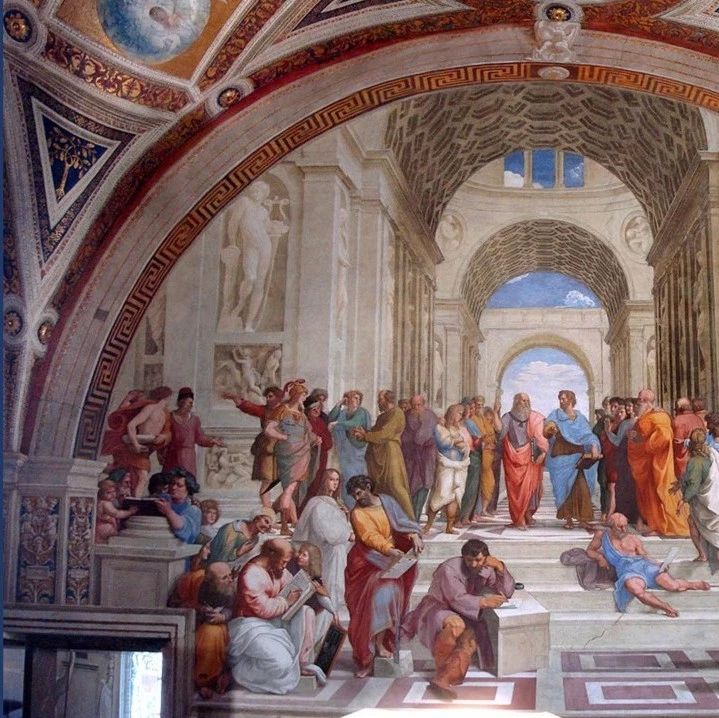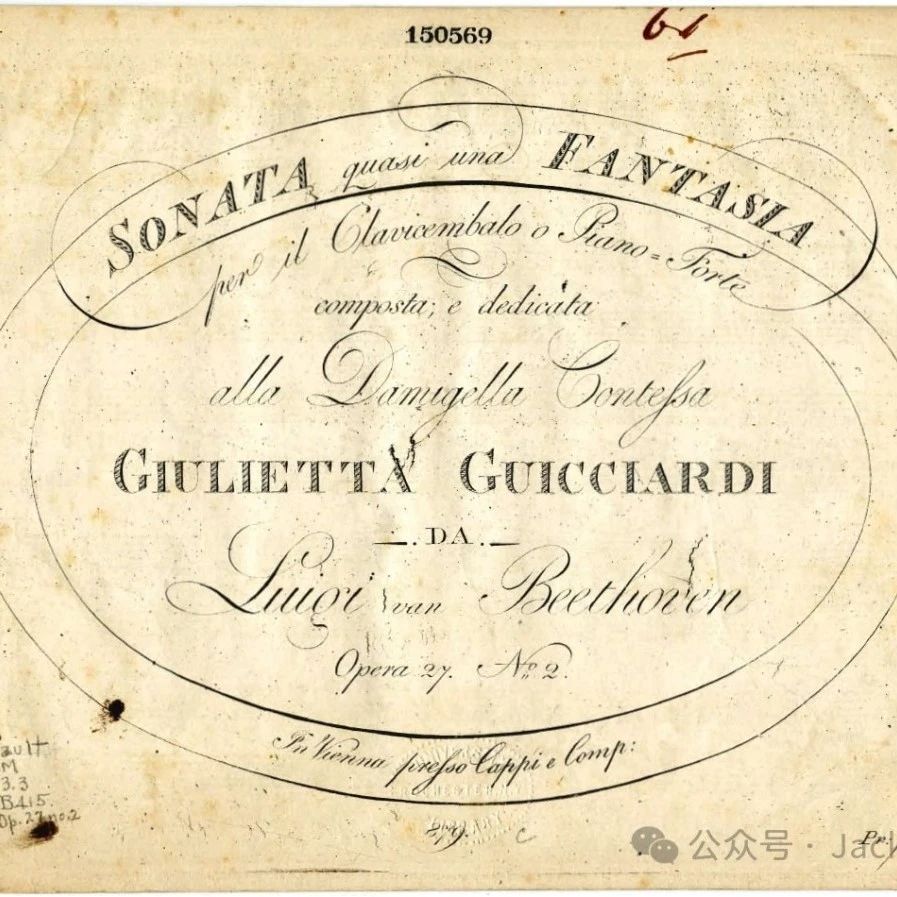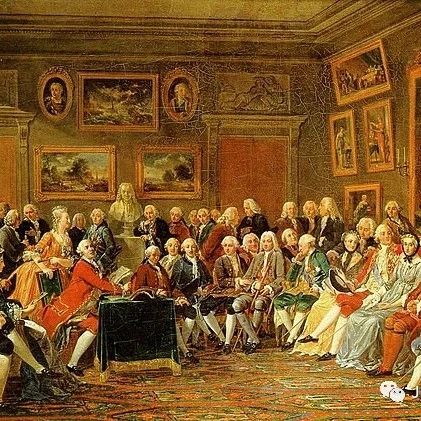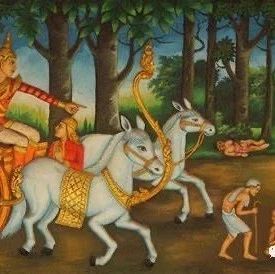Read History with Jack 25 - The School of Athens
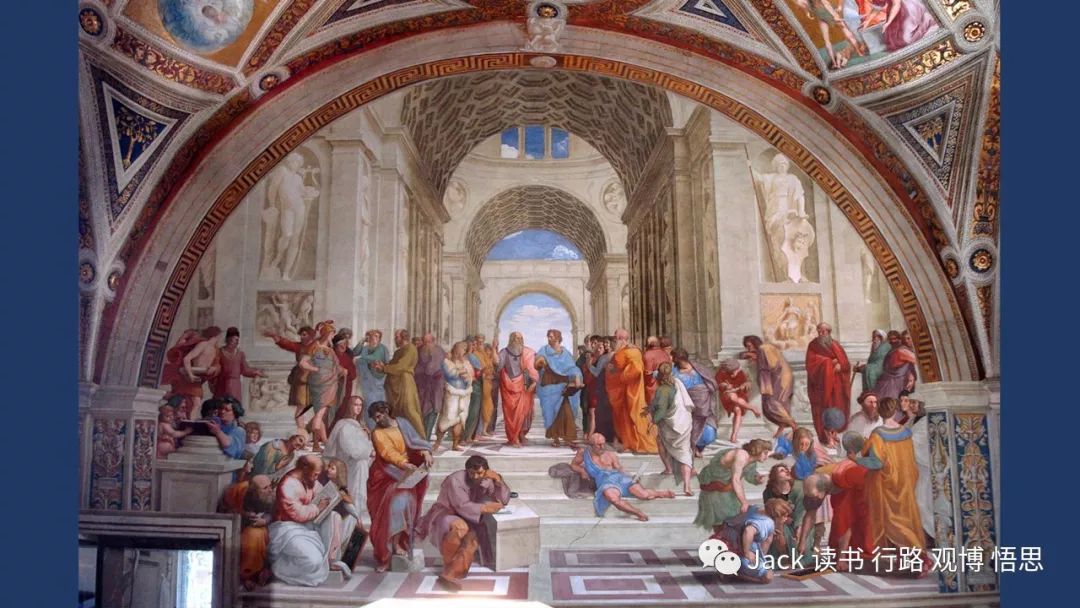
The School of Athens is a fresco painting painted by Raphael during the years of 1509 to 1510. In the painting, the setting is in a vast hall, in it 50 or more scholars of different subjects, different places, and different nations gather together. They enthusiastically discuss under a free environment, and it is not only a gathering of scholars, but also it is a gathering of the many opinions and ideas.
Raphael used perspective and the vanishing point in this fresco. Perspective is an approximate representation in a drawing as it is seen in real life by our eyes, and the vanishing point is a point in a drawing where two parallel lines converge to a single dot. Raphael used these techniques along with many others to create a vivid atmosphere.
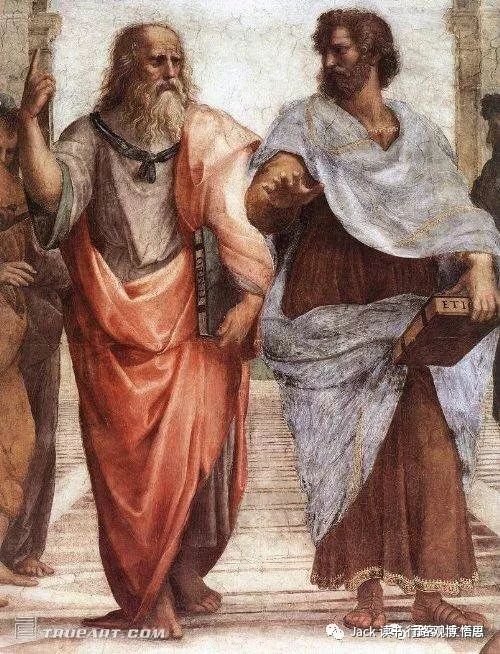
There are many figures in this fresco, but here are just some of the most notable ones. In the center, are the two great Greek philosophers Plato and Aristotle. Through their gestures we can find out that they are arguing for their own philosophical idea. Plato's right hand points toward the sky, and that is where the ethereal realm of his eternal forms lies. His left hand holds the book Timaeus. However, Aristotle is holding out his right hand facing the ground. That symbolizes his ideas of the worldliness and the concreteness. In his left hand he holds his Nicomachean Ethics. Some other younger scholars are listening or voicing their own points beside these two philosophers.
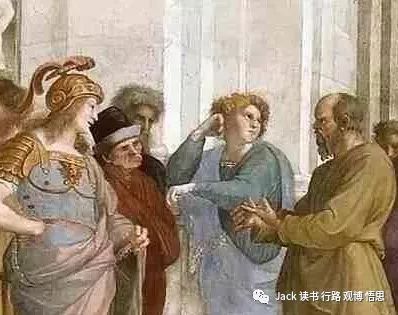
In order to pay respect to another ancient Greek great philosopher Socrates, Raphael also put him in the scene. He is a little way left from Plato and he is clad in a greenish robe.
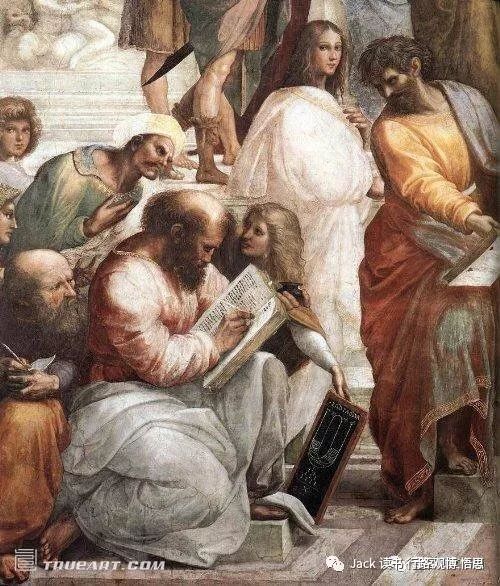
In the down-left corner is a group of people. The man who is writing is the great mathematician Pythagoras, who believed that the origin of the world are numbers, not gods. Behind him is the famous Islamic scholar Averroes, who wears a white turban and is looking downwards.
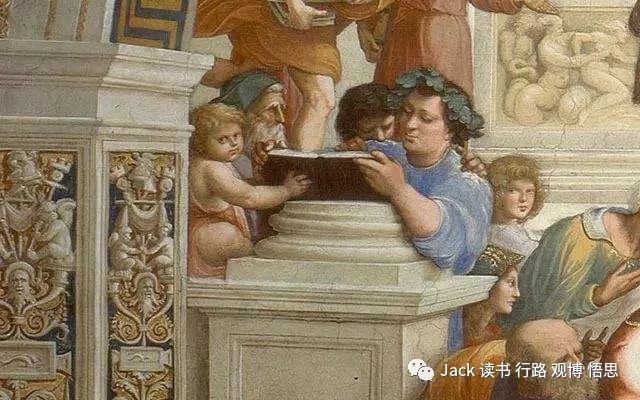
A little bit up from Averroes, there is a man who has a green laurel wreath on his head. That is Epicurus, a philosopher who founded a new school of philosophy called Epicureanism. He taught that the root of all human neurosis is death denial, and the tendency for human beings to assume death will be horrific and painful. But he claimed that all this can cause unnecessary anxiety and many other bad emotions, so we should not fear death because it is just the end of the body.
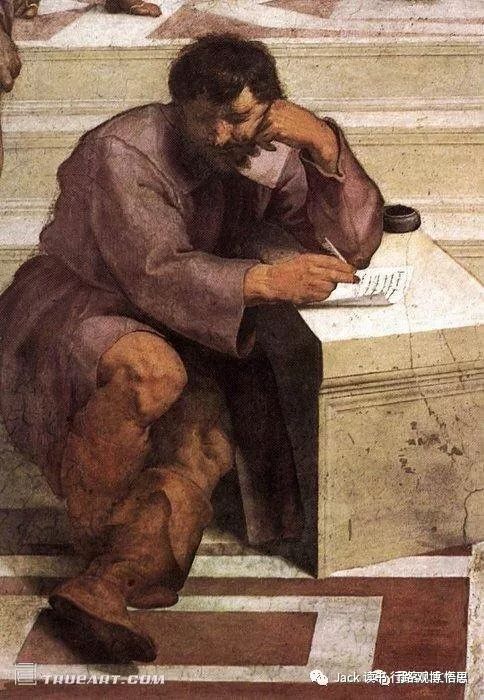
On the stairs there is a man sitting, thinking, and writing. He is the materialistic philosopher Heraclitus. He is usually depicted as a dark melancholic philosopher so that’s why he is drawn thinking in the painting.
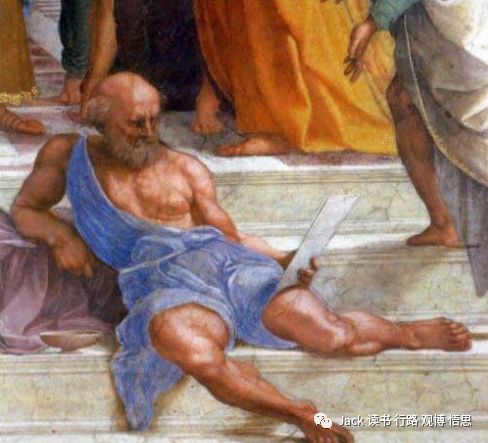
Right of Heraclitus there is a man lying on the stairs; he is the Cynic philosopher Diogenes. Cynics believe that we should enjoy and revere nature, and to cast away any luxurious thing around us. Diogenes did not live in a house, he lived in a big barrel, and he was always in simple clothes. A story tells that once Alexander the Great, the king of the Kingdom of Macedon, asked Diogenes what he desired of him. And, Diogenes simply answered: “Could you stand a little out of my sun?”
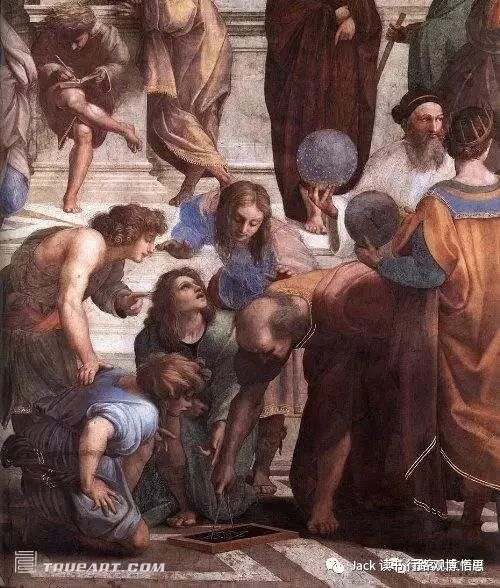
The famous mathematician Euclid is also in the scene. He is on the right side of the painting and he is bent drawing shapes using a compass. His studies of geometry are stilling being taught in today’s schools, for 2000 years!
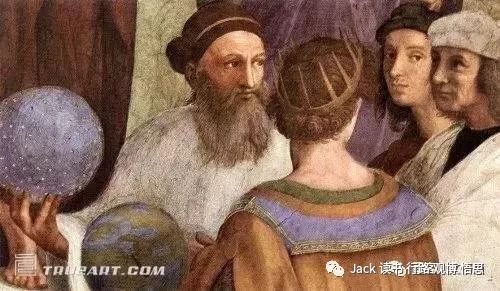
A little distance right from Euclid there is Ptolemy, a great astronomer and a supporter of geocentrism, the theory that claimed that the Earth is at the center of the universe. He is holding an astroscope and is wearing yellow clothing.
Finally, besides Ptolemy there is Raphael himself, only showing his face. Raphael drew himself because it could show his attitude towards this artwork.
From this enormous fresco we can view the magnificence of the wisdom of ancient Greeks, and the great talents that were from that time. This painting commends the wisdom of humans and their strong will to pursue the truth. It also shows the freedom, in which scholars, no matter where and what family they come from, can discuss and debate freely. Let me end this article with a quote from Aristotle:“Plato is dear to me, but dearer still is truth.”
Citation:
1. “The bschool of Athens”. en.wikipedia.org/wiki/The_School_of_Athens. Accessed on Jun.21st, 2019.
2. “The school ofAthens figures.”www.artmumble.com/2011/11/who-are-figures-in-raphaels-school-of.html.Accessed on Jun.21st, 2019.
- 本文标签: 原创
- 本文链接: http://www.jack-utopia.cn//article/509
- 版权声明: 本文由Jack原创发布,转载请遵循《署名-非商业性使用-相同方式共享 4.0 国际 (CC BY-NC-SA 4.0)》许可协议授权
